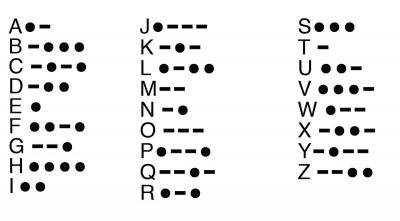Morse Code alphabet
History is not always as informative as we claim. The nature of communicating about things involves deciding what information to omit. Hopefully this is only for the logistical consideration of limited space, time, and attention.
For this reason we say things like Samuel Morse invented the telegraph. Even a brief web search will reveal that this is debatable, or at least, a major oversimplification. As with nearly all inventions, many people around the globe were working on similar devices, many with the same name. Technology, like war, religion, and art, is something humans have always been passionate about, leading to controversy and complexity regarding the history of developments in these realms.
People began working on ways to send messages electronically long before electricity was widely available to common people. Governments, universities, and private firms all realized the vast potential in speeding up communications through electricity. There were many versions that were experimented with, but Morse’s patented device, and his alphabet of dots and dashes, Morse Code, eventually became the standards.
Morse certainly deserves credit for his contributions to telegraph technology, but so does his less mentioned partner, Alfred Vail. On May 24, 1844 Morse sent Vail the first successful message on their telegraph device, from Washington DC to Baltimore, Maryland. It was:
“What hath God wrought?”
Sources:
A Forgotten History: Alfred Vail and Samuel Morse- Smithsonian Institute Archives
Morse- Library of Congress
The Surprising History of the Morse Telegraph- Electronics Notes
